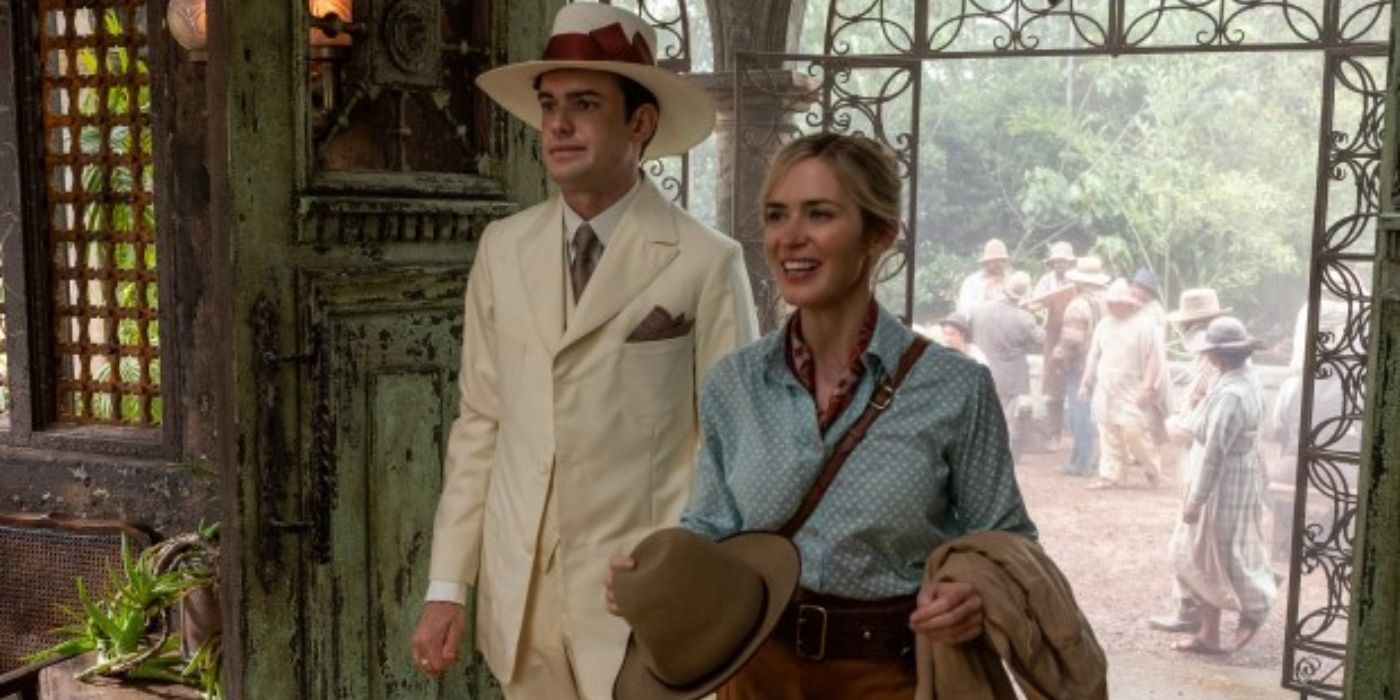
WARNING: The following contains spoilers for Jungle Cruise, now available in theaters and on Disney+ Premier Access.
In 2020, America experienced a cultural and, in particular, racial reckoning that resulted in the reevaluation of everything from team mascots to grocery branding. Disney -- with its theme parks closed and its streaming service still in its infancy -- found itself under the microscope, too. In response, the pop cultural juggernaut added content warnings to offending movies on Disney+, such as Dumbo and Lady and the Tramp, and it went a step further by announcing that certain problematic rides would receive updates or be rethemed altogether. Interestingly, one of those rides was also the inspiration for a big-budget, star-filled live-action film: Jungle Cruise.
Jungle Cruise was an opening day attraction back in 1955, meaning it's been part of Disneyland since the beginning. In contrast, Splash Mountain is based on what's widely considered to be Disney's most offensive film, Song of the South, and didn't appear at parks until 1989, while Pirates of the Caribbean debuted in 1967. An insensitive scene in that ride, in which women were being sold at auction, was replaced by one with a female pirate. As for Jungle Cruise, it began life as a gentle, educational boat ride, but morphed into a bad pun comedy tour over the years. As off-putting as some of the jokes are, it's the ride's depiction of indigenous people as head-hunting savages that necessitated some retooling.

Presumably, the creative team behind Jungle Cruise saw the controversy coming years before. Production on the film began in 2015 and wrapped in 2018, with the well-thought-out plot changes already in place. Jungle Cruise was supposed to premiere in 2019, but was delayed once prior to the pandemic then moved to July 30, 2021 to give it a better chance at the box office. The film features Dwayne Johnson as Frank the Skipper, the movie's version of the ride's wisecracking guide, and Emily Blunt as Lily Houghton, the intrepid academic who hires him to take her downriver to find the long lost Tree of Life.
Jungle Cruise opens with a self-aware scene that plays out as if the audience is taking a brief trip on the purposefully lame Disney attraction. Tourists with cameras and pocket money to spare crowd onto Frank's rickety boat, groan at his dad jokes and endure what are obviously fake threats to their safety. When the native tribe appears, clad in war paint and headdresses and armed with spears and blow darts, the passengers duck and cover, but Frank and the indigenous people let the audience in on the grift. They're not offensive stereotypes. Well, they are, but it's only a part they're playing, working with Frank to lend some "authenticity" to the adventure these mostly Anglo Saxon wannabe explorers are paying to have.
Around the movie's midway point, Frank, Lily and her brother, MacGregor, are struck with tranquilizer darts and carried off to the locals' neck of the woods, where for a moment, the audience might be fooled into thinking Jungle Cruise could wind up with a content warning. Frank does warn Lily that the "real" natives are on their route and that they'll eat her flesh if she runs afoul of them. Lily and MacGregor believe themselves to be in danger, but it becomes clear, as Frank scam-translates for her, that this is all still business as usual. When Lily overpowers one of the tribespeople and attacks them with their own spear, the person behind the creepy mask gives up the gag. It turns out, these locals hate the over-the-top costumes Frank makes them wear and the harmful stereotypes he insists they embody just as much as woke parkgoers do.

The most egregious element of the ride is the cameo of Trader Sam, a native who sells shrunken heads. Here, the character has been gender swapped and is played by Mexican actor, Veronica Falcón. She's also been promoted from shifty salesman to multilingual female chief, a fact which later makes the very white, very male society of scientists scoff in outrage. This Trader Sam is definitely less of a stereotype than Jesse Plemons' maniacal German prince. Jungle Cruise implies that the tribe she commands is more worldly and modernized than the ride gives them credit for, while also trying to keep their culture alive and protect the secrets of the Tears of the Moon.
It's a semi-clever twist and a slightly more clever way to deal with the ride's 1950s-style myopic racism, though the movie doesn't really give the indigenous characters much dimension or much to do. One tribesman takes out a bad guy with a golf club, and even Trader Sam is relegated to featured player when she could've easily been more integral to the plot. But the trick does turn a critical eye back onto the European visitors to the Amazon and what they mistakenly assume about the people who call it home. The bon-voyagers see people who are different than them as either a curiosity or a hazard, no different than a jaguar or a piranha.
The story within the story, in which Spanish conquistadors pillage from and kill the Amazonian people, adds a dash of the evils of colonialism and makes the tribe even more sympathetic. In the end, Jungle Cruise's depiction and use of its characters of color isn't perfect, but it shows that Disney can avoid the painful mistakes of its past and turn out a final product that is just as fun and family friendly.
From director Jaume Collet-Serra, Jungle Cruise is currently in theaters and available to stream via Disney+ Premier Access.
0 Comments